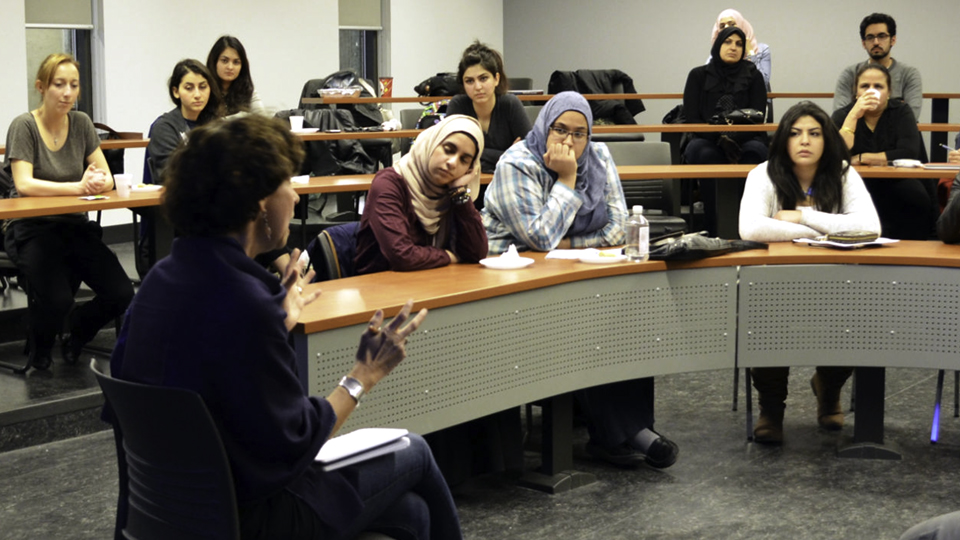The Students for Pan-Arab Dialogue hosted a discussion on campus last Tuesday about racism towards and among immigrant communities.
The discussion, titled “Discussing Racism in the Diaspora: A Conversation on Constructed Stereotypes”, was led by Rima Berns-McGown, an adjunct professor of diaspora studies in U of T’s Department of Historical Studies, and Shelina Kassam, a sessional instructor in the department’s women and gender studies division.
In his introduction, Ahmen Khan, the vice-president of SPAD, said that people lose parts of their identity—things as small as the tea in their homeland—when they immigrate. “Does the nostalgia for such things [get] in the way of becoming a mosaic and mixing in the Canadian culture?” he asked.
The speakers made opening remarks for 10 minutes each before taking questions from the audience.
Berns-McGown talked about the racism she witnessed during apartheid in her native Africa, and which she also experienced when she came to Canada.
She also discussed her recent study, for which she interviewed young Somali immigrants from different social backgrounds, many of whom had experienced racism and Islamophobia in Canada.
“But astonishingly, each one of them [said that] being Canadian means respecting someone who is different from you even if you don’t agree with them. So being Canadian is an attitude,” said Berns-McGown. She compared her results to those of a similar study by a colleague in Britain, where the majority of young Somalis answered that to be British meant to be a white man who drinks beer.
“We’re doing something right, but there is a long way to go,” she said.
Kassam argued that Canadians are tolerant of immigrants as long as the differences are “palatable”. She also argued that the term “moderate Muslim” is problematic, since it implies that Muslims are not inherently moderate, and contended that the difference in power between a host nation and its immigrants destroys the notion of equity from the outset, since the power of the host nation to be tolerant is also the power to be intolerant.
“I walk into a room and people look at the way I dress, look at the way I speak, and I can put on a darn good Canadian accent. And people look at that [and] say, ‘That’s a good immigrant; she fits,” said Kassam.
She argued that this attitude detracts from an immigrant’s individuality. “Try to put a woman in a niqab in that [Molson’s “I Am Canadian”] ad. Let’s see how that plays out,” said Kassam. “It would not sit well with our national psyche.”
Afterwards, students and faculty asked questions and discussed their experiences with the fear some people have of being too inclusive towards immigrants, the similarities between the Canadian and European attitudes towards immigrants, and racism between immigrant communities and towards sects within a community.
“We are learning to be literate in the language of understanding one another, and learning to be literate about one another. It’s a bumpy road and it’s not going to happen overnight,” said Berns-McGown. “But it’s astonishing how far we’ve come and how quickly we’ve come. And we have to remind ourselves of that when we are despairing.”



